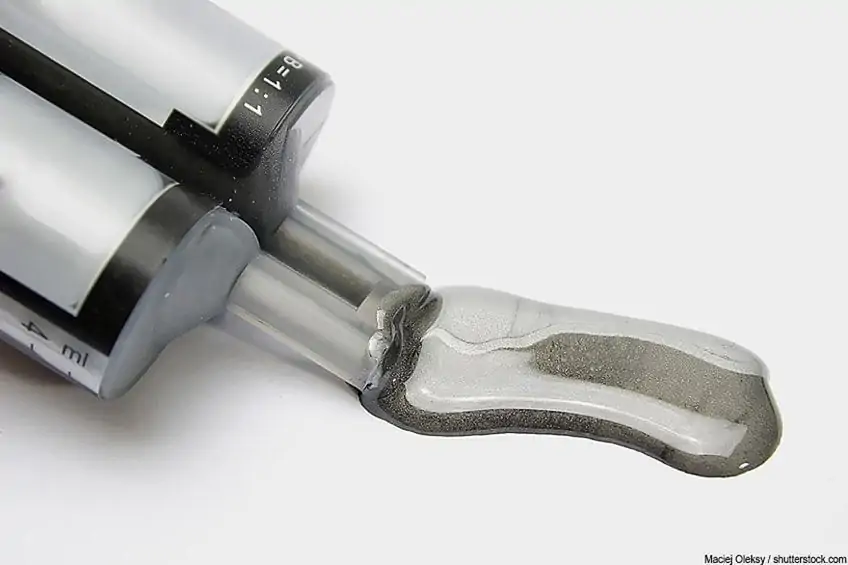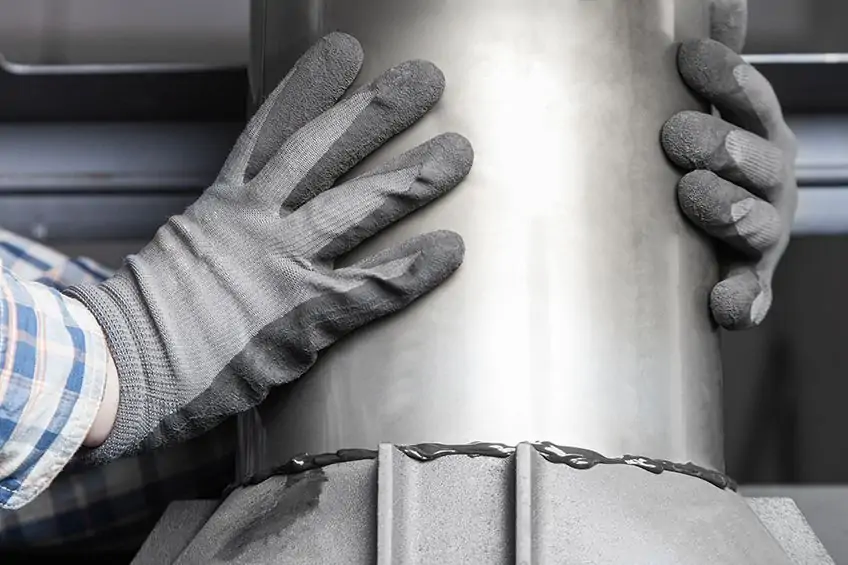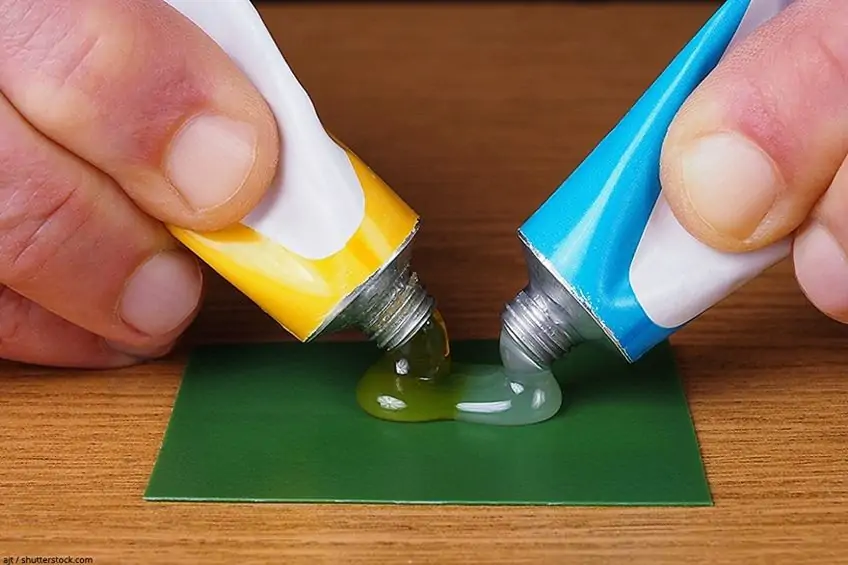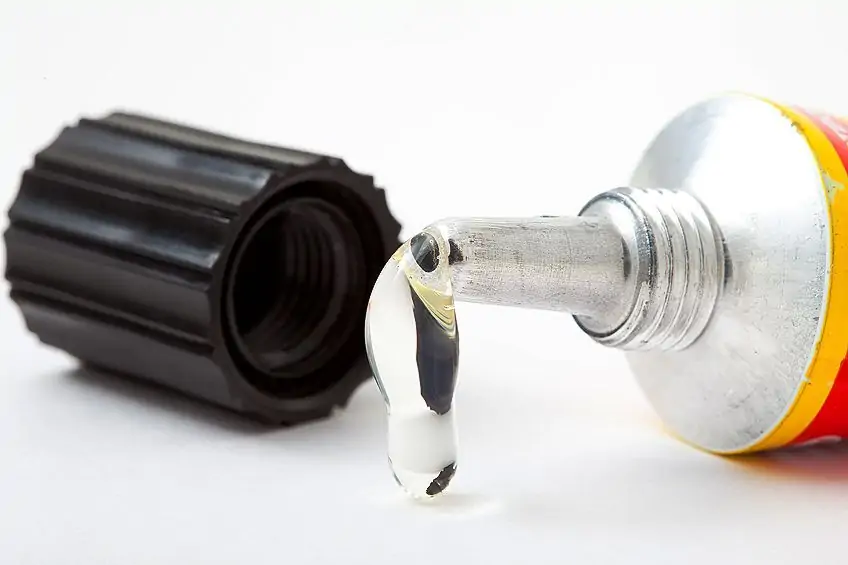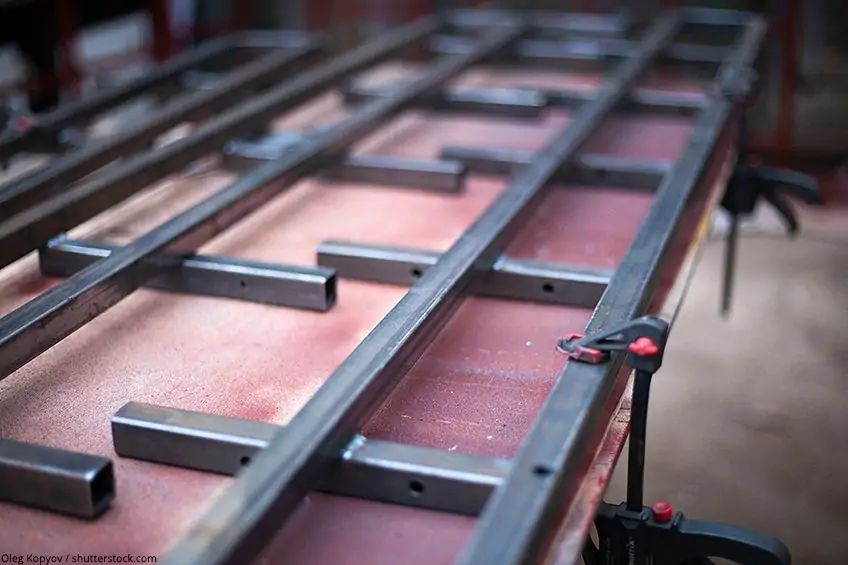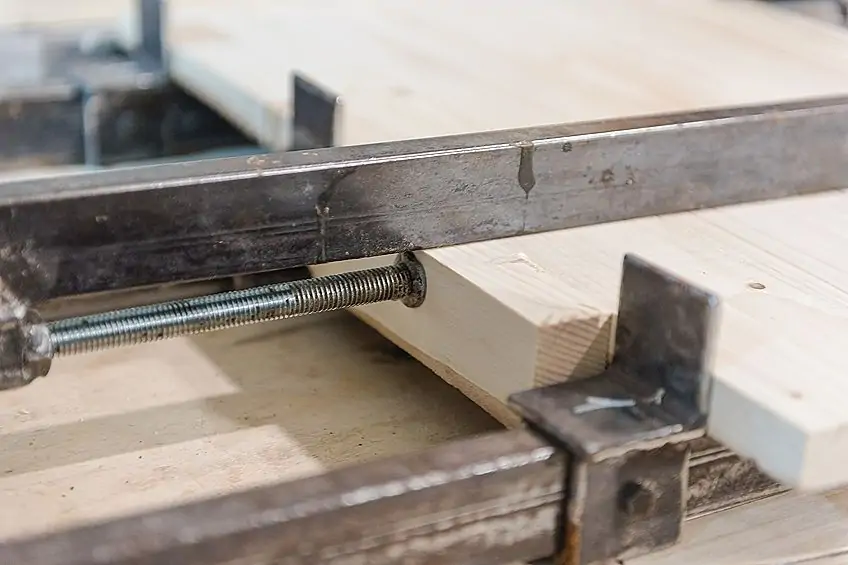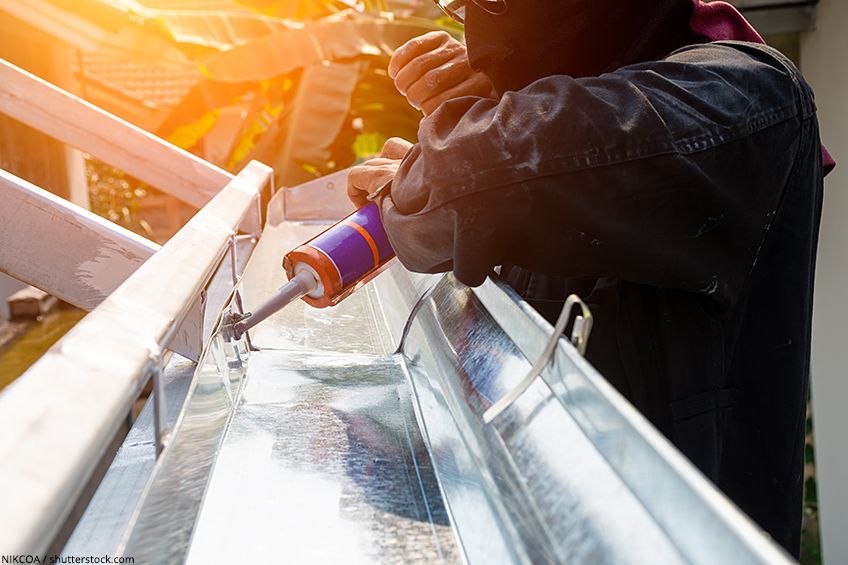Best Epoxy for Aluminum – A Guide to Finding the Top Aluminum Epoxies
This post may contain affiliate links. We may earn a small commission from purchases made through them, at no additional cost to you. You help to support resin-expert.com
There are a few things people love to have when they are in a pinch. When you have a flat tire it’s useful to have a spare, when you find yourself in the middle of a blackout it’s useful to have some candles, and when aluminum products break, it is useful to have an aluminum epoxy. This being said, what makes a good aluminum epoxy?
Table of Contents
What Should You Look for When Buying an Aluminium Epoxy?
There are a few characteristics you should look for when selecting an epoxy for aluminum, given that not every product on the market will tick all the boxes, but you should be aware of what your product is and is not capable of adhering to. Let’s have a look at some important characteristics to keep in mind.
Tensile Strength
Tensile strength is usually used to measure the strength and impact resistance of solid objects like wood and metal, however, in the context of epoxies it indicates to which degree the epoxy can adhere to a surface before its bond is broken.
Choose the best epoxy for aluminum your project demands, and keep in mind that if the price is not an object for you, it’s better to have an epoxy that might be considered “overkill” in the PSI department than one that’s slightly cheaper but has the adhesive bond of paper glue.
Tensile strength is measured in pounds per square inch or PSI for short and will often be noted on either the leaflet or box you purchase your epoxy in, therefore always ask a sales assistant or consult the epoxy’s manufacturer website to ensure the product you have purchased is conducive to the load it will be supporting and more importantly the surfaces you are attempting join.
Once you know what the strength rating of your epoxy is, always know what strength you will need for your workpiece beforehand to avoid disappointment, epoxies have been known to possess a tensile strength anywhere between 500PSI and 3000PSI.
Resistance to Water
It is said that the cornerstone of a great martial artist is not using brute force to overpower your opponent, rather using the minimum amount of force required and knowing how to apply it efficiently. This is a lot like choosing the right tool for the job, and when choosing an aluminum repair epoxy, you should know exactly how you intend to use it and what potential forces your workpiece will be exposed to. Should your workpiece be exposed to rain or be submerged in water you should consider using a water-resistant or waterproof epoxy.
Most epoxies on the market today are not water-soluble, so they have a small degree of water resistance to them.
If you will be submerging your workpiece it is best to purchase a waterproof epoxy or a water-resistant epoxy should your workpiece only be exposed to water on occasion. Water-friendly epoxies are often a bit more expensive than conventional high tensile epoxies due to the expense involved in formulating the waterproof solution, but they often pay for themselves much sooner than later, especially when your workpiece doesn’t fall apart due to a drizzle.
Ease of Application
How many times have you gone out and bought some coffee instead of making some at home? Have you ever asked yourself why you do this? Well, generally speaking, on a subconscious level, everyone looks for the easiest solutions to their problems.
When your pen runs out of ink you simply buy a new one, when you want something to eat you just order something for delivery. Refilling your pen and making something in the kitchen are often our second choices because they are easier solutions that save us time, even though they can cost us a bit more money in the long run. With this reasoning in mind, epoxy and variations of these adhesives come to parts that you have to mix, namely the epoxy itself and the hardener.
They also vary in the manner in which they are mixed and applied, the most common of which involves you combining the two parts in a separate container/pallet and then quickly scooping it up and applying it to your workpiece. The premium application method is present in the form of a double-barrel syringe, one holds the epoxy and the other hardener. This not only saves you the minor heart attack related to mixing and applying the solution in time, but it allows you to apply the precise amount you need for that particular job.
Resistance to Heat
One could group water resistance and resistance to heat under the versatility category. Having an epoxy that is resistant to heat and moisture is beneficial and sometimes absolutely necessary. This is obviously dependent on the application, and with this in mind, you should always consider what the heat tolerances and temperature of the environment of your workpiece are or will be.
Depending on the grade of the epoxy you purchase, it will have a set temperature as well as a maximum tolerance temperature it can handle which will be indicated on the leaflet inside the packaging or in the packaging itself. You should pay special attention to these instructions because if epoxy is applied in an environment where the temperature is too high for the hardener and the epoxy to form the solution, you will be stuck with a toxic mess.
Temperature tolerances are also super important, they will often tell you which cold or hard temperatures will break the bond between the epoxy and your workpiece. The last thing anyone wants is to find that their newly repaired workpiece (and hard work) has been foiled by a cold spell or freak heatwave.
These tolerances will also give you a good indication of where an aluminum repair epoxy can be used, for example, an epoxy that cannot handle heat above 220 degrees Fahrenheit will not be suitable for use in a car’s engine bay.
Remember that metals are incredible conductors of heat and therefore taking temperature into account will save you from having to do a second repair job.
Hardening Time Frame and Aesthetic Appeal
Whoever said “A quick fix for a long-standing problem only works for the short term” has clearly never used aluminum epoxy filler. Epoxies are available in a variety of hardening and curing times and depending on the brand and application. Drying and hardening times won’t really have an effect on the quality of the adhesive, but it helps to know how long of a wait you will be in for, especially if the completion of your workpiece is time-sensitive. Remember to always check the drying and hardening times of the epoxy you will be buying if you need something that will dry and harden quickly.
Aesthetics are arguably as important as functionality in some disciplines, this being said if you will be using aluminum epoxy filler for crafting purposes you probably want to paint over it or sand it down to create a flush surface. In this case, you should choose an epoxy that is conducive to this application because finding out that you can’t alter the epoxy once it has been dried and hardened means you will have to find a way to dissolve it, clean the surface of your workpiece and start from the process from the beginning again.
What Is the Best Epoxy for Aluminium?
Now that you know which characteristics to look for when choosing an aluminum epoxy filler, let us have a look at some of the best aluminum epoxies on the market today, as well as the pros and cons that each presents. Remember that this is an objective review, and the best epoxy for aluminum is the one that best suits your specific application.
Best Overall Aluminum Epoxy: J-B WELD SteelStik Steel Reinforced Epoxy
If you have ever needed to repair something that simply should not be broken at the very second you need to use it, or accidentally tore off a piece of your car’s front bumper, you have probably heard of JB Weld.
For those who don’t have the time or the tools for a “proper” fix JB Weld Steelstik provides a strong adhesive bond to both bind and seal off any break or void, you could possibly throw at it. Unlike other two-part adhesives, Steelstik from JB weld comes in the form of an adhesive putty which not only makes it easy to apply but is easily manipulated, sculpted, sanded, and even tapped, regardless of whether you have any experience with high strength epoxies.
- Two-part epoxy putty reinforced with steel particles for lasting repairs
- The epoxy takes only 5 minutes to set and cures within an hour
- This epoxy can be molded, shaped, sanded, drilled, and tapped
What many have been known to call the best epoxy for aluminum (or the best epoxy ever made), JB weld has become a household name ever since its inception, which comes as no surprise considering that Steelstik has a tensile strength of 900 PSI, can easily handle continuous temperatures of up to 350 degrees Fahrenheit, can be used on virtually any common metals, and even sticks to plastics like polyurethane and fiberglass.
The possibilities with his product are endless and considering it only takes an hour to fully cure and harden you would be far better off keeping some of this stuff around the house for when those sticky situations arise. To be honest we would be surprised if we could not JB weld aluminum but thankfully this manufacturer rarely disappoints.
PROS
- Versatile
- Sets quickly
- Heat resistant
- Malleable
- Easy to use
- High tensile strength
CONS
- Low quantity
- Users claim poor adhesion to stainless steel
- Paste not conducive to all applications
- Only one color available
- Must be painted to match
Best Adhesion Strength: MASTERCOOL Alum Bond A/C Repair Epoxy
Some products work on surfaces as a by-product of their composition and others are purpose-built, which can feel like comparing a supercar to a Honda Civic. This is pretty much the case with Alum Bond from the folks over at Master Cool, as this product was specifically designed to repair air circulation units which are typically made out of lightweight aluminum to ensure they can be suspended with minimal risk.
This is objectively a bit better than trying to JB Weld cast aluminum since it is made specifically to work and bond with this metal, in fact, the epoxy and hardener contain little particles of aluminum to improve adhesion and structural integrity of your workpiece once cured and hardened. Since the solution has been specifically designed to work with your existing aluminum workpiece you can expect that it will be under some pretty nasty forces such as extreme heat, pressure, cold, and even vibration.
- Contains small aluminum particles to increase bonding ability
- Strong under extreme pressure, heat, vibration, and cold
- Versatile and suitable for a range of repair projects
Alum Bond takes all of these like a champ, ensuring that everything from holes in your car’s radiator to tiny scratches in the frame of your motorcycle is fixed in virtually no time at all. If you are wondering just how much Alum Bond can handle you might be surprised to hear that it has a whopping 3500 PSI tensile strength, and when being used on feed lines can handle a viscosity of nearly 8500 PSI if given the time to properly cure and harden for five hours.
There have been reviews and videos circulating online of people using this solution to fix various automotive and engineering issues, in fact, there have been instances where people have claimed to repair air leaks in turbochargers, fix coolant leaks in radiators, and even smooth out dents in forged aluminum wheels. This comes as no surprise considering its adhesive properties, and if strength is what you need in your aluminum epoxy, we say look no further.
PROS
- Purpose-built
- Contains metal particles
- High tensile strength
- High viscosity tolerance
- Cures and hardens in 45 minutes
- Easily blended with raw materials
CONS
- Expensive
- Not versatile
- No mixing syringe.
- Difficult to work with
- Can be hard to distinguish from actual metal
Best Value for Money: LOCTITE Professional Liquid Super Glue
This one might come as a surprise considering it’s what most of us to sick ornaments to our walls, but Loctite superglue is truly one of the most underrated adhesives on the market today which in is probably in no small part due to it commonly being used for domestic purposes.
You definitely won’t be using it to repair holes in the haul of a ship, but just in case you have a pin-sized hole in an aluminum model ship you are working on, Loctite has you back. Surprisingly, according to the official spreadsheet provided by Loctite themselves, it has a lap shear strength of 290 to 1600 PSI when applied to aluminum if allowed to cure and harden for about 72 hours give or take, and it is fire-resistant to boot!
- Professional-strength ingredients work fast and hold strong
- Fast-setting formula resists moisture, most chemicals, and the cold
- Pinpoint nozzle allows precise application without dripping or oozing
Loctite also has the added advantage of being clear, and if you are careful and make use of some fine-grit sandpaper, you could even get away with sanding it down in instances where you have applied a bit too much. Once more, Loctite might not be able to handle high temperatures, but it makes up for this being impervious to unleaded gas, motor oil and is even water-resistant to a degree.
This might not be your first choice especially considering the versatility of some of the other adhesives we have covered so far, but should you have the need to do some light aluminum repair the solution will make quick work of it, and that’s not just a phrase, Loctite dries in roughly 45 seconds and literally only get strong the longer you allow it to set. This being said, it might not be very versatile but relative to its intended use, Loctite does an incredible job as an aluminum adhesive even if you can’t use it to JB Weld cast aluminum.
PROS
- Cheap
- Easy to use
- Precise application nozzle
- Clear color
- High shear/tensile strength
- Versatile
CONS
- Not waterproof
- Cannot be used on flexible objects
- Not for outdoor applications
- Cannot be used on foam or rubber
- Cannot fill gaps in aluminum
How to Use Adhesives on Aluminium Surfaces
If you have chosen your aluminum adhesive already, you probably think you can just slap it on your workpiece and let it set. You are not wrong, but it probably won’t work as well as it could have if you put some time into preparation. Fortunately, we have prepared a short tutorial on how you can use your new favorite adhesive on your aluminum workpiece.
Check Your Work Area
Workplace safety is nobody’s favorite topic but just like seatbelts, it’s one of those boring things that are absolutely necessary, so when working with epoxies and adhesives it is always best to work in a space that you have covered in protective cloth or tarp. This ensures that you don’t get any sticky stuff onto surfaces or machinery that don’t need it, and you should always ensure that your workplace is well ventilated as many adhesives contain chemicals that can prove to be harmful when inhaled in concentrated amounts.
Protecting Yourself
Now that your workplace is all up to code you should consider getting some personal protective gear for yourself. Remember that epoxies are designed to stick and stay stuck indefinitely, therefore getting some on your hands or arms can prove to be a less than ideal situation, in which you will have to consult the manufacturer’s guidelines to dissolve the adhesive. Avoid this by investing in some nitrate gloves, these are lightweight, thin, disposable, and cheap.
This way will allow you to use your hands to mix adhesive putty and check the consistency of two-part adhesives you have mixed together with more thoroughly, not to mention apply it more robustly than with a brush or syringe.
Although a bit extreme in our opinion, you also have the option of wearing safety goggles, and you are asking yourself why you might need these, consider all those times your face has started to itch when your hands were dirty. Safety goggles seem like a small price to pay in exchange for retaining your eyesight, right?
Preparing Your Workpiece
Here are a few steps you can follow to ensure that you achieve maximum adhesion between your adhesive of choice and your workpiece. Remember that some preparation now can save you hours of having to re-do something at a later stage.
Ensure Your Surface Is Clean
As if you sprayed painting a surface it is important to ensure that your aluminum is clear of any foreign contaminates. You can use a microfibre cloth to ensure there is no dust, oil, grease, or other particles that would interfere with the adhesion process. A common practice is to use liquid sprits or similar solvents to clean the surface of the metal of any impurities once completed ensuring that the contact surface is dry and that the spirits have evaporated.
Rough Up Your Workpiece
Just as if you were preparing a piece of wood for spray painting, a good habit to develop when applying anything to a sheer surface is to use friction to create some “bite” for the adhesive. Essentially you can roughen up your surface with 120 grit sandpaper to ensure that the spot which will be receiving the adhesive is ready. Once you have a roughed up the section of your workpiece, use the spirit solution you previously used to clean the surface and give it a once over again.
Wipe Down with Water
Most adhesives don’t react too well with chemicals like liquid spirits, therefore it’s a good idea to use a different microfibre cloth that is slightly damp to remove any residual chemicals and/or left-over raised metal from the abrasion process.
Once this is done you can prepare your adhesive for application.
Adhesive Preparation and Application
Depending on whether you have a syringe or have to mix the adhesive together manually this step will differ. Check the hardening and curing time of your product, as some adhesives dry fairly quickly, and others may take a few hours. It is important to know how much time to position and manipulate an adhesive once the two parts have been mixed together, so think carefully as most adhesives only get harder the longer they are together. Finally, gauge how much you will need for a specific task, as anything you don’t use once the solution has been mixed will need to be disposed of.
Now that you have all the information about which adhesives work on aluminum, what you should look for in these types of adhesives, what different brands have to offer, and even how to safely apply these adhesives to your workpiece, the choice is yours. Remember to always choose the adhesive that best suits your application, and as always stay safe!
Frequently Asked Questions
Is There an Aluminium Glue?
There are many adhesives on the market today, however, to bond large pieces of aluminum you will need what is called an industrial adhesive if you do not want to weld this metal. These adhesives come in two parts, consisting of an epoxy and a hardener which form an incredibly strong bond when mixed together. These bonds are often impacted resistant, waterproof, and heat resistant depending on the product.
Does JB-Weld Work on Aluminium?
Does JB-Weld work on aluminum? Absolutely. There are products from this company that is specifically designed to work with aluminum and other related metals. These products have been tried and tested and have won customer approval time and time again. JB Weld makes a lot of products so make sure you read the product description correctly to avoid buying the wrong one.
How Do You Repair Broken Aluminium?
If you are looking to avoid welding, there are many epoxies available on the market which can join, fill and repair aluminum. You can also heat-join aluminum or use cold metal stitching if the application for the metal will involve little to no stress. Ensure that you have the correct adhesive for your desired application, where it be waterproof, heat resistant, and so forth.


